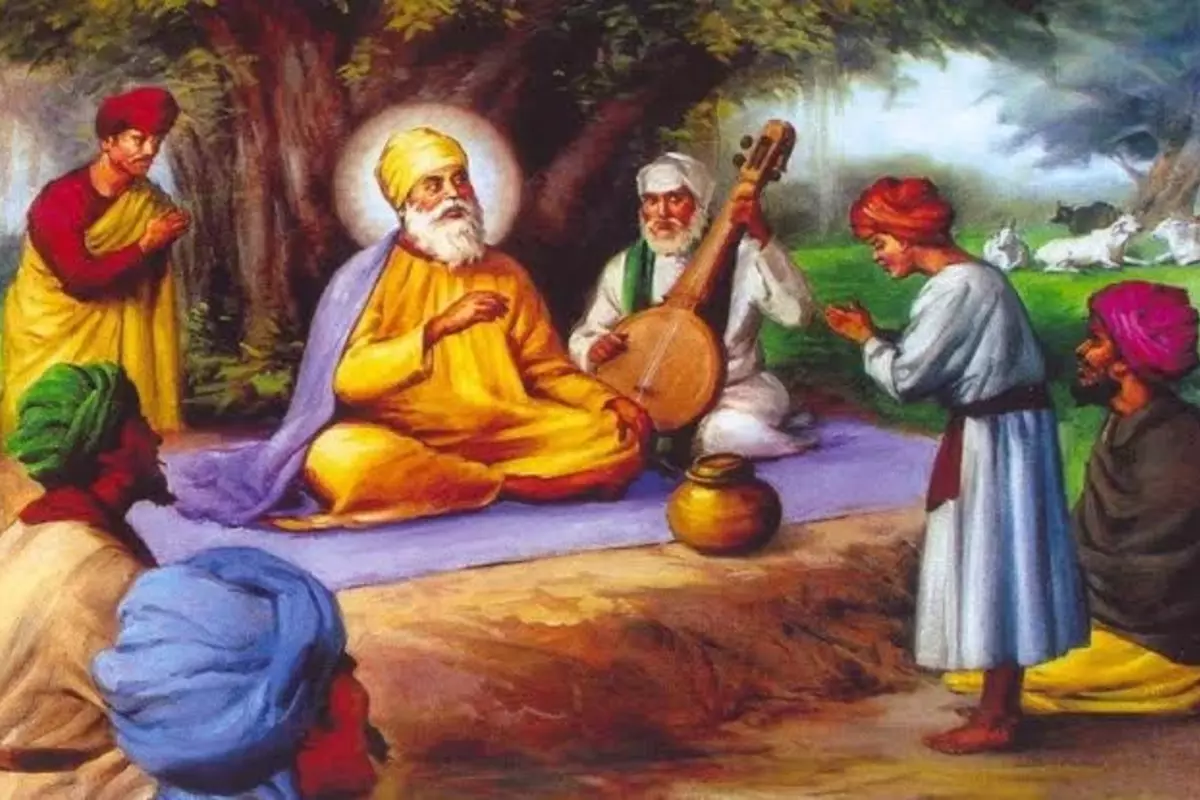
One is struck by a significant dichotomy when exploring Guru Nanak’s true contribution to mankind. The ‘Sikh’ religion is said to have been started by Guru Nanak, but some reputable historians and scholars vehemently dispute this.
Digging profoundly into the sytheses remembered for the Gurbani Granth, especially those created by Master Nanak, we find a reasonable and objective perspective on human existence and the encompassing peculiarities winning. The main exemption lies in the utilization of terms like Smash, Allah, Rabb, Khuda, Parmesar, Gobind, Jagdish, and so forth. These terms are utilized through graceful gadgets of illustration and exemplification, as all arrangements are in stanza structure. In Gurbani, these terms are portrayed as counterfeit names for the Vast Request (kirtam naam). As a general rule, Master Nanak didn’t teach confidence in a heavenly being like God or any philosophical substance. All things considered, he presented the Infinite Request, the whole universe, as an option in contrast to God, assigning it as Hukam.
The Cosmic Order is further depicted as ੧ਓ (pronounced as “ikkoh,” meaning the only one). Gurbani explicitly rejects religious pretensions, urging individuals to rely on reason, truth, and morality in all aspects of life. References to mythical figures, events, and anecdotes in Gurbani aim to diminish the significance of traditional religious beliefs and ritualistic practices.
Guru Nanak’s philosophy can be best described as the doctrine of modern Humanism. This Humanism aligns with the principles outlined in the Amsterdam Declaration of Humanism issued in 1952 and revised in 2002. All the key elements of modern Humanism highlighted in this Declaration are already present in Gurbani. The teachings of Gurbani primarily emphasize the promotion of rationalism, the adoption of ethics, scientific temperament, the protection of human rights, democratic governance, the value of the arts, an ideal life stance, rejection of religious dogma, social responsibility, a sense of justice, equality, brotherhood, and more.
This interpretation of Guru Nanak’s philosophy sharply contrasts with the claim that he founded a religion like Sikhism, which in practice can be as orthodox as any of the world’s four thousand religions. Born in 1469 CE, Guru Nanak emerged in 1499 CE with a well-defined doctrine of Humanism. His initial slogan was “No one is Hindu, no one is Mussalman,” signifying that people are born as humans, not tied to any religious label. He advocated treating everyone primarily as a human being, free from the confines of creed, caste, status, region, race, etc. Thus, the roots of modern Humanism trace back to the 15th century CE on Indian soil. Guru Nanak propagated this philosophy extensively over the next three decades, establishing a movement led by him and his successors, culminating in Guru Gobind Singh.
Clearly, Guru Nanak’s philosophy and campaign posed a formidable challenge to the prevailing religions of his era and the repressive rulers of the country. At that time, Brahmanism and Islam dominated India’s religious landscape. The Brahmanical forces strategically sought to dilute Guru Nanak’s humanistic movement. By the early 18th century CE, with the support of Hindu chiefs from hill states, the Muslim rulers inflicted significant damage on the movement. The armed followers of the Gurus, known as the Khalsa, were compelled to seek refuge in remote areas. By the fourth decade of the century, the community centers of the Gurus were taken over by Brahmanical sects, initially by the Udaasis and later by the Nirmalas. These sects established Amritsar as their headquarters and propagated a new religion called ‘Sikh Dharam,’ borrowing all its tenets and practices from Brahmanism and falsely attributing them to Guru Nanak and his successors. This resulted in a religion that aimed to subdue Guru Nanak’s humanistic philosophy and dismantle the vigorous movement that he and his successors had led for over two centuries. These adversarial forces held the upper hand throughout this process.
In the end, we are left with a religion labeled ‘Sikh Dharam,’ which, in essence, contradicts the philosophy of Humanism conceived, practiced, and preached by Guru Nanak.
(WITH INPUT SOURCE)

















